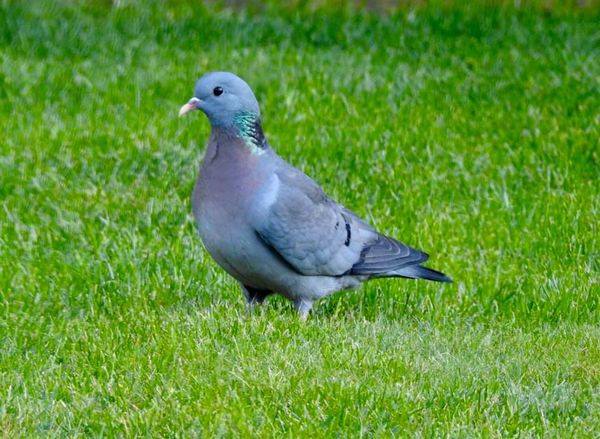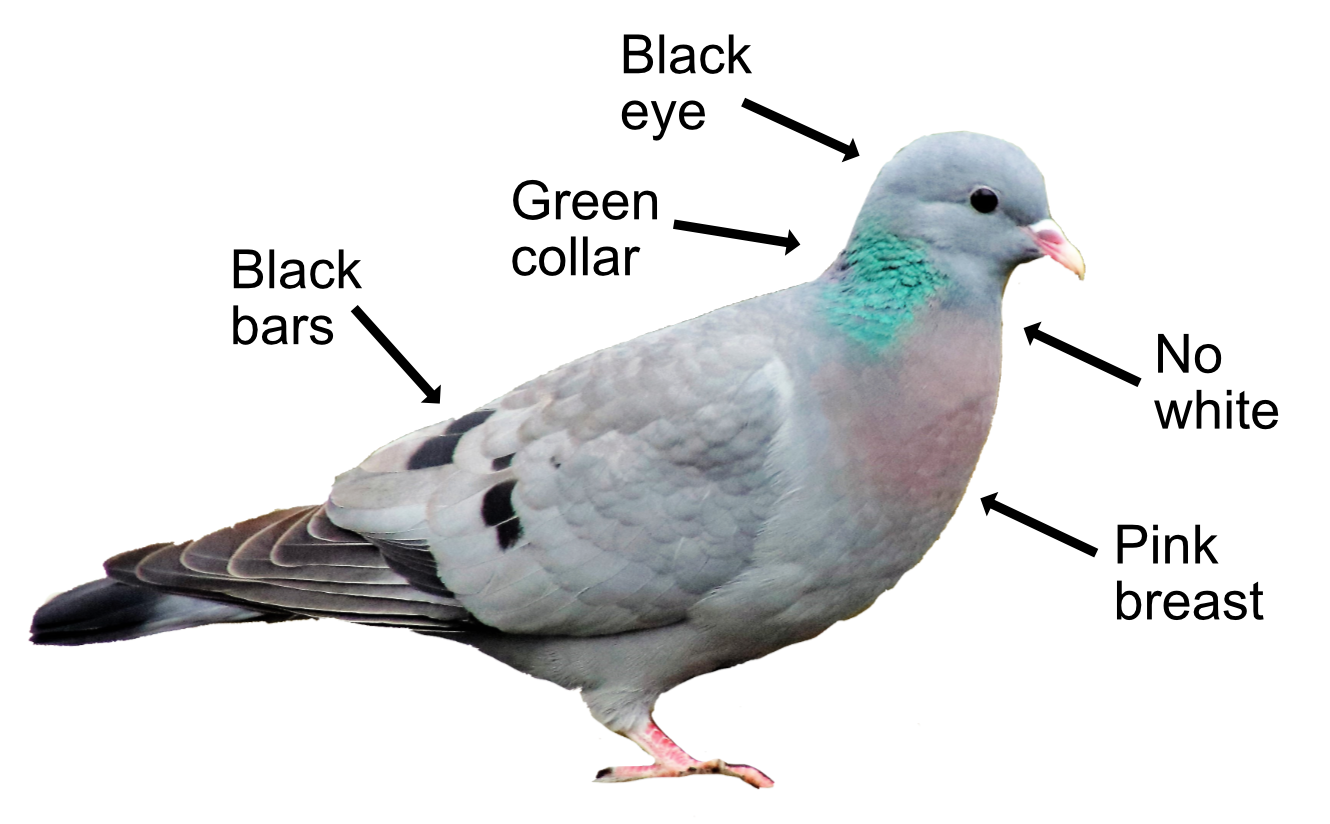
Easily overlooked as just another pigeon, the Stock Dove is the secret agent hiding in plain sight. Looking the same, but subtly different. The Stock Dove is smaller than the similar-looking Woodpigeon, though without the white patches on its wings or neck and no pale rump. They are mainly found in large gardens, parkland and avenues of old trees where there is water nearby to drink. In the winter, if you see a flock of Rooks or Jackdaws on the ground, take a closer look at the pigeons as some of these can be sneaky Stock Doves.
Like the Woodpigeon, they are blue grey with a purple sheen on their neck and a pinkish breast. They have grey wings with short black bars and dark edges. There is no white on their wings when flying. Their call is different too. It is an "ooo-wah" unlike the Woodpigeon's more familiar "take two cows taffy". The Stock Dove is a bit of a veggie, eating mainly plant material like seeds, buds and leaves.

To attract a female, the male Stock Dove performs a display flight, flying in large circles with wings held in a shallow V. He then lands on the ground, puffs out his chest, and calls while bowing to the female like some Elizabethan courtier. The Stock Dove is unique amongst pigeons because it nests in holes in trees, cliff faces, and even rabbit burrows. They lay 2 eggs at different times, which both parents incubate. Each egg hatches after 16 days. The youngsters are fed by mum and dad and can fly at 25 days, becoming independent soon afterwards. They can have two or more broods in a year as, like other pigeons, they have their top secret crop milk.
The Stock Dove is mainly resident with 260,000 pairs and is found everywhere except in northern Scotland. Over half of the European Stock Dove population lives in the UK. A few of the European birds will pop over in the winter to further increase numbers and exchange spy stories. The oldest ringed bird lived to be 12 years old. Unlike the Woodpigeon, the Stock Dove is protected. Long ago people were not so nice to the poor Stock Dove. In East Anglia, occupied rabbit holes were covered up with crossed sticks so that the parent Stock Dove could feed their chicks, but the chicks could not leave the nest. They were then taken - for the pot - when they were nice and fat. That's Fennies for you.
Their Latin name is 'columba oenas'. The 'columba' is derived from the Ancient Greek 'kolumbos' meaning a 'diver' because of its swimming motion in the air and the 'oenas' means 'pigeon'. The English name comes from an old word 'stocc' meaning 'stake or tree trunk'. Therefore, Stock Dove is a dove which lives in hollow trees.